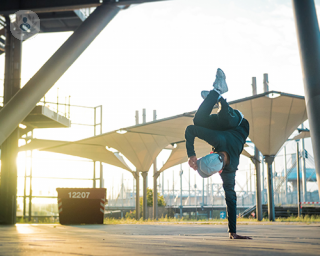What is wrist arthroscopy?
Arthroscopy is a type of laparoscopic (keyhole) surgery, which is used to both diagnose and treat joint problems. It can be used to look inside the joint of the wrist, and there are many techniques employed by various surgeons. Arthroscopy is performed on many parts of the body, and wrist arthroscopy is one of the most common arthroscopic procedures.

Why is wrist arthroscopy performed?
Wrist arthroscopy allows the doctor or surgeon to examine the inside part of the wrist joint, including ligaments and the surface of cartilage, which can help them to determine if there is an internal problem in the wrist. The procedure may be performed after an injury, such as a fall, or when the wrist has twisted. There may be some swelling, clicking, or bruising, which can lead a medical professional to believe further investigation is necessary.
Wrist arthroscopy can also help to align wrist fractures, remove (wash away) infection, remove excess joint lining from conditions such as inflammatory arthritis, and remove ganglions (a fluid-filled swelling).
What does wrist arthroscopy involve?
An arthroscope is a small camera which is fixed to the end of a long, narrow tube. This tube is inserted into the body through a small cut made in the back of the wrist joint. The camera allows the surgeon to see inside the wrist joint, through direct projection on the screen in front of them. Further cuts can be made to allow the surgeon to see inside different areas of the wrist joint. This also allows the surgeon to repair the ligament if necessary.
How can you prepare for wrist arthroscopy?
Usually there is no specific preparation the patient needs to do before the procedure. It is advisable to arrange transport or to arrange for someone to help the patient get home after the procedure. The patient must give their medical history and tell the surgeon which kinds of medicine they are taking, and they will be advised accordingly which they are able to continue with. Blood-thinners must be temporarily avoided before surgery (common blood thinners are ibuprofen and aspirin). These details will all be discussed pre-surgery so the patient is always aware what is expected of them.
What's involved in post-operative care for a wrist arthroscopy?
After the procedure, the wound is closed with stitches, and a bandage is placed around the wrist which limits motion. This allows for faster recovery, as it will protect the wrist area and support helps to relieve pain. As arthroscopy is usually performed as a day-case procedure, there is not normally an overnight stay in hospital. The patient can go home the same day, and is advised to keep their wrist elevated for a few days after surgery in order to minimise swelling. Cold packs can help with swelling too.
Some patients may need to wear a splint which will provide them with support. If a dressing is applied, it may need to be changed and correct aftercare advice will be given by the healthcare provider. Physical therapy or specific hand exercises may be advised to help the patient regain the full range of motion.
11-13-2012 07-24-2023Wrist arthroscopy
Mr Shahrier Sarker - Orthopaedic surgery
Created on: 11-13-2012
Updated on: 07-24-2023
Edited by: Karolyn Judge
What is wrist arthroscopy?
Arthroscopy is a type of laparoscopic (keyhole) surgery, which is used to both diagnose and treat joint problems. It can be used to look inside the joint of the wrist, and there are many techniques employed by various surgeons. Arthroscopy is performed on many parts of the body, and wrist arthroscopy is one of the most common arthroscopic procedures.

Why is wrist arthroscopy performed?
Wrist arthroscopy allows the doctor or surgeon to examine the inside part of the wrist joint, including ligaments and the surface of cartilage, which can help them to determine if there is an internal problem in the wrist. The procedure may be performed after an injury, such as a fall, or when the wrist has twisted. There may be some swelling, clicking, or bruising, which can lead a medical professional to believe further investigation is necessary.
Wrist arthroscopy can also help to align wrist fractures, remove (wash away) infection, remove excess joint lining from conditions such as inflammatory arthritis, and remove ganglions (a fluid-filled swelling).
What does wrist arthroscopy involve?
An arthroscope is a small camera which is fixed to the end of a long, narrow tube. This tube is inserted into the body through a small cut made in the back of the wrist joint. The camera allows the surgeon to see inside the wrist joint, through direct projection on the screen in front of them. Further cuts can be made to allow the surgeon to see inside different areas of the wrist joint. This also allows the surgeon to repair the ligament if necessary.
How can you prepare for wrist arthroscopy?
Usually there is no specific preparation the patient needs to do before the procedure. It is advisable to arrange transport or to arrange for someone to help the patient get home after the procedure. The patient must give their medical history and tell the surgeon which kinds of medicine they are taking, and they will be advised accordingly which they are able to continue with. Blood-thinners must be temporarily avoided before surgery (common blood thinners are ibuprofen and aspirin). These details will all be discussed pre-surgery so the patient is always aware what is expected of them.
What's involved in post-operative care for a wrist arthroscopy?
After the procedure, the wound is closed with stitches, and a bandage is placed around the wrist which limits motion. This allows for faster recovery, as it will protect the wrist area and support helps to relieve pain. As arthroscopy is usually performed as a day-case procedure, there is not normally an overnight stay in hospital. The patient can go home the same day, and is advised to keep their wrist elevated for a few days after surgery in order to minimise swelling. Cold packs can help with swelling too.
Some patients may need to wear a splint which will provide them with support. If a dressing is applied, it may need to be changed and correct aftercare advice will be given by the healthcare provider. Physical therapy or specific hand exercises may be advised to help the patient regain the full range of motion.


Scapholunate ligament injuries and how to treat them
By Ms Anna Moon
2024-12-26
When a person falls over they can damage the scapholunate ligament which restricts the use of the wrist. Find out more about how these injuries can be treated. See more


Wrist arthroscopy: who needs it and what it involves
By Mr James Nicholl
2024-12-25
While many wrist injuries will heal on their own over time, some might require a surgical operation. In recent year, we have developed ways to operate on the delicate structures of the wrist with the minimal amount of damage. We asked expert hand and wrist surgeon Mr James Nicholl about what wrist arthroscopy is and who might benefit from it. See more


Deciding on the best treatment for wrist arthritis
By Mr Stephen Lipscombe
2024-12-24
Wondering where to start with your treatment options for your wrist arthritis? Whether it's from a wearing a splint to steroid injections or even surgery, one of our expert hand and wrist surgeons Mr Stephen Lipscombe explains all of the possibilities that are available to relieve you from wrist pain. See more
Experts in Wrist arthroscopy
-
Mr Philip Mathew
Orthopaedic surgeryExpert in:
- Wrist arthroscopy
- Carpal tunnel syndrome
- Hand arthritis
- Dupuytren’s contracture
- Wrist surgery
- Hand fracture
-
Mr Dimitrios Karadaglis
Orthopaedic surgeryExpert in:
- Rotator cuff surgery
- Sports injuries
- Wrist arthroscopy
- Elbow arthroscopy
- Shoulder replacement
- Tendon injuries
-
Mr Shahrier Sarker
Orthopaedic surgeryExpert in:
- Hand surgery
- Joint replacement
- Wrist arthroscopy
- Dupuytren’s contracture
- Wrist fracture
- Carpal tunnel surgery
-
Miss Fiona Middleton
Orthopaedic surgeryExpert in:
- Dupuytren’s contracture
- Carpal tunnel syndrome
- Trigger finger
- Wrist arthroscopy
- Wrist surgery
- Hand tendonitis
-
Mr Rupert Wharton
Orthopaedic surgeryExpert in:
- Hand surgery
- Wrist surgery
- Sports injuries
- Wrist arthroscopy
- Dupuytren’s contracture
- Carpal tunnel syndrome
- See all

The Blackheath Hospital - part of Circle Health Group
The Blackheath Hospital - part of Circle Health Group
40-42 Lee Terrace, Blackheath, London SE3 9UD
No existe teléfono en el centro.
By using the telephone number provided by TOP DOCTORS, you automatically agree to let us use your phone number for statistical and commercial purposes. For further information, read our Privacy Policy
Top Doctors

The London Independent Hospital - part of Circle Health Group
The London Independent Hospital - part of Circle Health Group
1 Beaumont Square, Stepney Green
No existe teléfono en el centro.
By using the telephone number provided by TOP DOCTORS, you automatically agree to let us use your phone number for statistical and commercial purposes. For further information, read our Privacy Policy
Top Doctors

OS Clinic
OS Clinic
OS Clinic, 45 Queen Anne St, London W1G 9JF
No existe teléfono en el centro.
By using the telephone number provided by TOP DOCTORS, you automatically agree to let us use your phone number for statistical and commercial purposes. For further information, read our Privacy Policy
Top Doctors
-
The Blackheath Hospital - part of Circle Health Group
40-42 Lee Terrace, Blackheath, London SE3 9UD, East LondonExpert in:
- Vascular Surgery
- Cardiology
- Bariatric Surgery
- Colorectal surgery
- Endocrine Surgery
- General Surgery
-
The London Independent Hospital - part of Circle Health Group
1 Beaumont Square, Stepney Green, East LondonExpert in:
- Cataracts
- Bariatric Surgery
- Maxillofacial Surgery
- Neurological spinal surgery
- Orthopaedic surgery
- Orthopaedic spinal surgery
-
OS Clinic
OS Clinic, 45 Queen Anne St, London W1G 9JF, W1G Marylebone LondonExpert in:
- Hip
- Minimal access surgery (keyhole surgery)
- Joint preservation surgery
- Maxillofacial Surgery
- Orthopaedic surgery
- Orthopaedic spinal surgery
- See all
- Most viewed diseases, medical tests, and treatments
- Ulnar nerve entrapment
- Peripheral nerve block
- Peripheral neuropathy
- Joint pain
- Lumbar herniated disc
- Spinal surgery
- Minimal access surgery (keyhole surgery)
- Shoulder pain
- Osteoporosis
- Botulinum toxin (Botox™)







